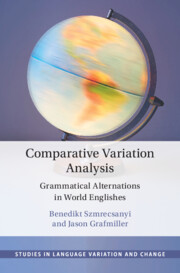60 results
La experimentación como herramienta para el estudio de la alfarería de la transición pampeano-patagónica oriental (Provincia de Buenos Aires, Argentina)
-
- Journal:
- Latin American Antiquity , First View
- Published online by Cambridge University Press:
- 24 April 2024, pp. 1-21
-
- Article
- Export citation
‘The god of criminals is their belly’: diet, prisoner health, and prison medical officers in mid-nineteenth-century English and Irish prisons
-
- Journal:
- Medical History , First View
- Published online by Cambridge University Press:
- 08 April 2024, pp. 1-21
-
- Article
-
- You have access
- Open access
- HTML
- Export citation
Part V - Gaining Ecosystem Momentum
-
- Book:
- Digital Innovation Strategy
- Published online:
- 21 December 2023
- Print publication:
- 21 December 2023, pp 199-268
-
- Chapter
- Export citation
10 - China’s Practice of Anti-suit Injunctions in Standard-Essential Patent Litigation
- from Part V - Patent Enforcement, Wireless Markets, and Global Competitiveness
-
-
- Book:
- 5G and Beyond
- Published online:
- 14 December 2023
- Print publication:
- 21 December 2023, pp 215-241
-
- Chapter
-
- You have access
- Open access
- HTML
- Export citation
Introduction
-
-
- Book:
- The Cambridge Companion to Contemporary African American Literature
- Published online:
- 14 December 2023
- Print publication:
- 21 December 2023, pp 1-28
-
- Chapter
- Export citation
27 - Self-Portraits in a Convex Mirror: The Essay in American Poetry
- from Part III - Postwar Essays and Essayism (1945–2000)
-
-
- Book:
- The Cambridge History of the American Essay
- Published online:
- 28 March 2024
- Print publication:
- 14 December 2023, pp 460-476
-
- Chapter
- Export citation
31 - The American Essay Film: A Neglected Genre
- from Part IV - Toward the Contemporary American Essay (2000–2020)
-
-
- Book:
- The Cambridge History of the American Essay
- Published online:
- 28 March 2024
- Print publication:
- 14 December 2023, pp 527-544
-
- Chapter
- Export citation
2 - Defining Science
-
- Book:
- The Philosophy and Practice of Science
- Published online:
- 17 September 2023
- Print publication:
- 31 August 2023, pp 8-17
-
- Chapter
- Export citation

Comparative Variation Analysis
- Grammatical Alternations in World Englishes
-
- Published online:
- 24 August 2023
- Print publication:
- 07 September 2023
13 - The Inexact Deductive Method
- from Part II - Theory Assessment
-
- Book:
- The Inexact and Separate Science of Economics
- Published online:
- 25 May 2023
- Print publication:
- 08 June 2023, pp 335-369
-
- Chapter
- Export citation
9 - Climate Governance and Federalism in India
-
-
- Book:
- Climate Governance and Federalism
- Published online:
- 11 May 2023
- Print publication:
- 25 May 2023, pp 177-197
-
- Chapter
-
- You have access
- Open access
- HTML
- Export citation
14 - The Ends of Romance in Chaucer and Malory
-
-
- Book:
- The New Cambridge Companion to Medieval Romance
- Published online:
- 11 May 2023
- Print publication:
- 25 May 2023, pp 211-227
-
- Chapter
- Export citation
6 - Physics: Exploring Pluriliteracies through a Deeper Learning Episode on Rainbows
- from Part II - Deeper Learning Episodes: First Steps towards Transforming Classrooms
-
-
- Book:
- A Deeper Learning Companion for CLIL
- Published online:
- 04 February 2023
- Print publication:
- 23 February 2023, pp 49-96
-
- Chapter
- Export citation
The application of Russell and Burch's Three Rs in commercial livestock experimentation
-
- Journal:
- Animal Welfare / Volume 15 / Issue 1 / February 2006
- Published online by Cambridge University Press:
- 11 January 2023, pp. 1-5
-
- Article
- Export citation
Meta-analysis — a systematic and quantitative review of animal experiments to maximise the information derived
-
- Journal:
- Animal Welfare / Volume 14 / Issue 4 / November 2005
- Published online by Cambridge University Press:
- 11 January 2023, pp. 333-338
-
- Article
- Export citation
Running experiments on Amazon Mechanical Turk
-
- Journal:
- Judgment and Decision Making / Volume 5 / Issue 5 / August 2010
- Published online by Cambridge University Press:
- 01 January 2023, pp. 411-419
-
- Article
-
- You have access
- Open access
- HTML
- Export citation
The impact of time limitation: Insights from a queueing experiment
-
- Journal:
- Judgment and Decision Making / Volume 11 / Issue 3 / May 2016
- Published online by Cambridge University Press:
- 01 January 2023, pp. 260-274
-
- Article
-
- You have access
- Open access
- HTML
- Export citation
Chapter 7 - Philosophical Influences
- from Part II - Intellectual and Artistic Context
-
-
- Book:
- Molière in Context
- Published online:
- 10 November 2022
- Print publication:
- 24 November 2022, pp 71-80
-
- Chapter
- Export citation
9 - New Ways of Knowing
-
- Book:
- Climate Activism
- Published online:
- 09 November 2022
- Print publication:
- 20 October 2022, pp 208-224
-
- Chapter
- Export citation
Chapter 11 - Walter Bailey’s (1529–1593) Medical Genres
-
-
- Book:
- Genre in English Medical Writing, 1500–1820
- Published online:
- 13 October 2022
- Print publication:
- 13 October 2022, pp 167-186
-
- Chapter
- Export citation



